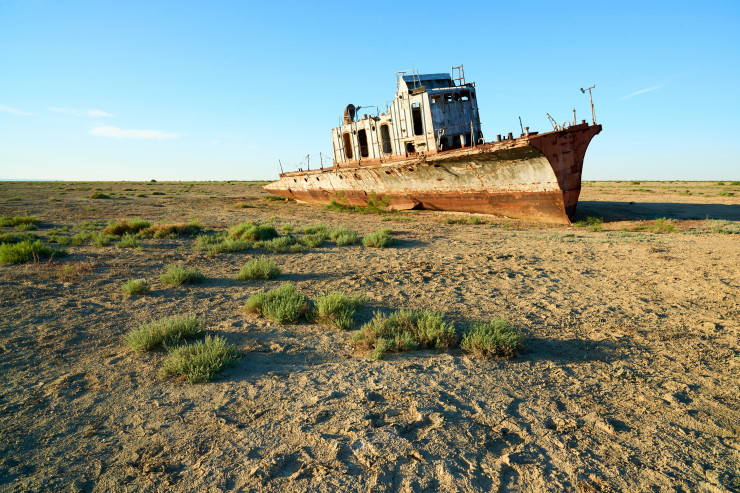05 March 2022
A trip to the Aral Sea region can become an attractive leisure activity for tourists, due to which it is possible to improve the situation of residents of nearby settlements. Travelers are attracted by the desert formed on the site of a shallow lake, as well as the “ghost ships” abandoned there, which locals should focus on.
As University professor Mike Robinson writes in his blog, foreign tourists are already attracted to ships stranded and rusting in the desert. They are mainly located in the city of Muynak of the Autonomous Republic of Karakalpakstan, on the territory of Uzbekistan.
The specialist believes that visiting these places is a must-have experience for many, especially young, environmentally conscious travelers. Mike Robinson emphasizes that the reception of tourists involves the development of the local economy: accommodation, restaurants, guides. At the same time, educational and cultural tourism will attract the attention of the world community to environmental problems.
 Торпедолов ТМ-99©Shutterstock
Торпедолов ТМ-99©Shutterstock
There are stranded ships in the Kazakh part of the Aral Sea. Four years ago they were seen during an expedition of the Kazakhstan National Geographical Society. However, they become the prey of metal hunters. Previously, the TM-99 torpedo, known from the Pink Floyd clip, was cut into scrap metal.
Now the devastated and somewhat forgotten former Aral Sea region is the object of a large-scale revival program jointly conducted by the United Nations Development Program and UNESCO. Previously, the Aral Sea was the fourth largest freshwater lake in the world with an area of 67,000 square kilometers, over time its area has decreased to 10 percent of its original area. Since 1960, the Aral Sea has been deprived of water from two main feeding rivers that were diverted to irrigate the cotton fields of the former Soviet Union, creating a vast salt marsh desert. The shallowing of the Aral Sea is considered an anthropogenic ecological disaster.
Информация взята с сайта Tengritravel.kz

















 Торпедолов ТМ-99©Shutterstock
Торпедолов ТМ-99©Shutterstock





